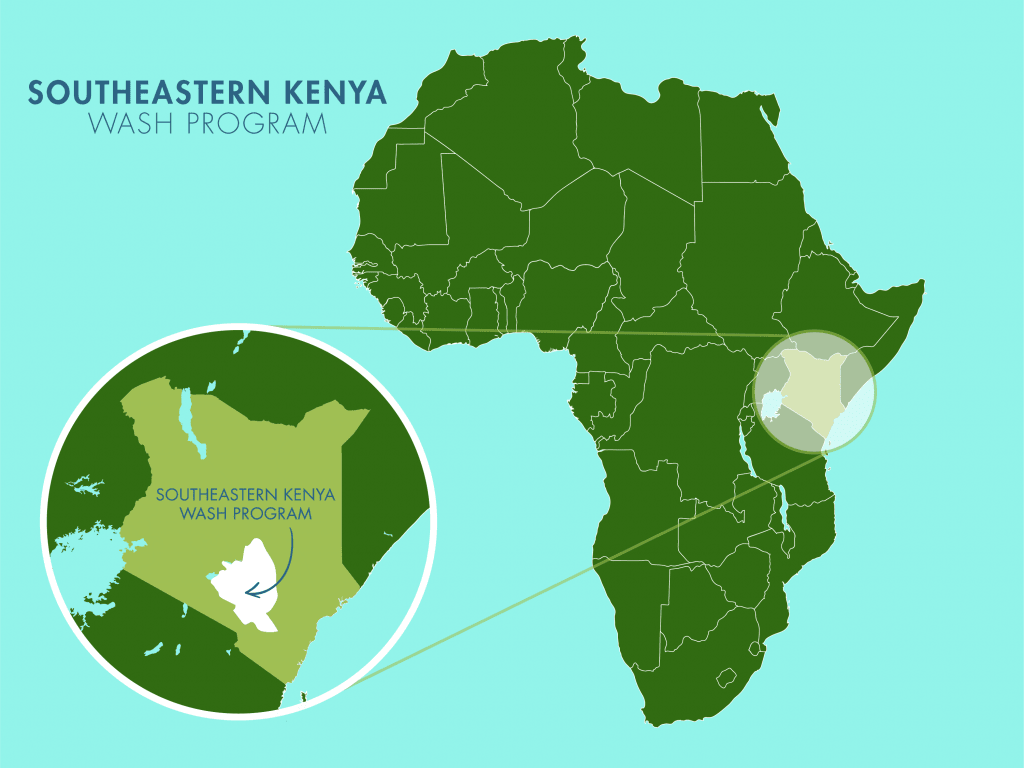For the 950 residents of Yuio Community, each day begins with the same uncertainty—will there be water today?

The two boreholes that serve the area are distant, unreliable, and often dry during the long drought seasons. The terrain between homes and these water points is rocky and steep, making every trip physically draining. When water becomes available, residents flock to the borehole kiosks in large numbers, resulting in overcrowding, long queues, and, at times, unsafe conditions.
Fetching water is not just a task—it’s a test of endurance. For many families, the process takes one to two hours per trip, sometimes even longer when waiting in line. Despite the effort, the reward is small: saline water that must be rationed carefully and is not always safe to drink.
This crisis not only burdens adults, but it also profoundly affects the lives of children. Their school attendance, concentration, and dreams are all shaped by the daily struggle to fetch water.
Faith, a bright and determined 15-year-old girl, is one of many young people in Yuio whose childhood has been marked by this daily hardship.

Faith.
“Fetching water takes a long time because the borehole kiosks are far from our home and are often overcrowded. Sometimes we have to wait in line for hours, especially when water has just become available after a shortage. The distance, the queuing, and the fact that the kiosks are only open on certain days all add up to a lot of time," reported Faith.
Faith spends around an hour each day collecting water, but the true cost is far greater. Every trip to the water point takes time she could have spent learning, resting, or simply being a child.
“If I didn’t have to spend so much time fetching water, I would use that time to revise my schoolwork and help my parents more at home. I’d also have time to rest, play, and focus on my dream of becoming a nurse," Faith said.
For Faith, water scarcity has become a barrier not only to health and hygiene but to education and hope. She often starts her mornings early, walking long distances with a heavy jerrycan in hand.
"I sometimes arrive at school late or feel too tired to concentrate after waking up early or spending hours fetching water. It affects my studies and my performance in exams because I have less time and energy to revise.”
The physical strain is matched by fear and frustration.

Community members assist Faith in getting her heavy jerrycan on her back for the long walk home.
“I’m worried about safety because the place is always crowded, and sometimes people push or argue while waiting for their turn. Also, the water isn’t always clean, and using it can lead to sickness, like stomachaches or diarrhea, which has happened to people in our village," Faith bravely shared.
Faith dreams of a different life, one where clean water is close by and her time can be devoted to learning and helping others.
“A new water point will make me feel safer because it will be closer to home, reducing the long walks and overcrowding. If it provides clean water, I’ll no longer worry about getting sick from drinking it or being in unsafe conditions while fetching it," she said.
Yet, for now, her daily experience remains the same: fatigue before the journey even begins, a mix of resignation and determination.

“When I’m sent to fetch water, I feel tired before I even begin because I know it’s going to take so much of my time. Sometimes I feel discouraged, especially when I have schoolwork or if the sun is too hot. But I also know we need the water, so I try my best," Faith lamented.
Faith’s hope shines through her weariness. Despite the exhaustion and long hours, she holds firmly to her dream: “I want to become a nurse so I can help people in my community stay healthy.”
Faith’s story is just one among hundreds in Yuio. The community’s water crisis is not merely about distance or scarcity; it is about lost potential. When children spend hours fetching water, they miss out on valuable learning opportunities. When families must buy saline water at high costs, they forgo food, seeds, or school fees. When water is contaminated, illness spreads and livelihoods weaken.

The residents’ efforts to cope have been admirable, but with droughts intensifying, each year becomes harder than the last.
A new protected dug well promises to change this narrative. The well will provide a reliable, year-round supply of clean water close to homes and schools.
The benefits will ripple through every part of community life, improving health, restoring time for education, and unlocking opportunities for farming and tree planting. Children like Faith will finally have a chance to study without the burden of daily water collection.
Field Officer Alex Koech shared his thoughts after meeting Faith and other community members:
“One of the most impactful moments was speaking with Faith, a 15-year-old girl who dreams of becoming a nurse. Hearing her describe the early mornings spent walking long distances to reach overcrowded and unreliable water kiosks, only to sometimes return home without water, was deeply moving. Her story brought to life the quiet resilience of many children in the community, who sacrifice study time and endure exhaustion just to meet their families' basic water needs.”
The Yuio Community stands at a turning point. With the planned sand dam, their long struggle for water could soon become a story of resilience rewarded. For children like Faith, it means a future defined not by thirst and fatigue, but by learning, health, and hope.
Access to water is more than convenience—it is the foundation upon which dreams like Faith’s are built.
Solving the water crisis in this community will require a multifaceted system that will work together to create a sustainable water source that will serve this community for years to come.
Steps Toward a Solution
Our technical experts worked with the local community to identify the most effective solution to their water crisis. Together, they decided to construct a protected dug well and sand dam.
Protected Dug Well Near A Sand Dam
Once a sand dam is installed and has time to mature by gathering sand and silt, groundwater increases significantly in the entire area surrounding the project. This provides a reliable source of groundwater that wasn’t possible before. As a result, wells can be constructed to take advantage of the water stored and filtered in the collected sand.
During the construction of the protected dug well, we will build a platform for the well and attach a hand pump. The community will gain a safe, enclosed water source capable of providing approximately five gallons of water per minute.
This protected dug well will be connected to a sand dam to obtain water.
Community Education & Ownership
Hygiene and sanitation training are integral to our water projects. Training is tailored to each community's specific needs and includes key topics such as proper water handling, improved hygiene practices, disease transmission prevention, and care of the new water point. Safe water and improved hygiene habits foster a healthier future for everyone in the community.
Encouraged and supported by our team's guidance, the community elects a water user committee representative of its diverse members. This committee assumes responsibility for maintaining the water point, organizing community efforts, and gathering fees to ensure its upkeep.

 Protected Dug Well
Protected Dug Well
 Rehabilitation Project
Rehabilitation Project


















